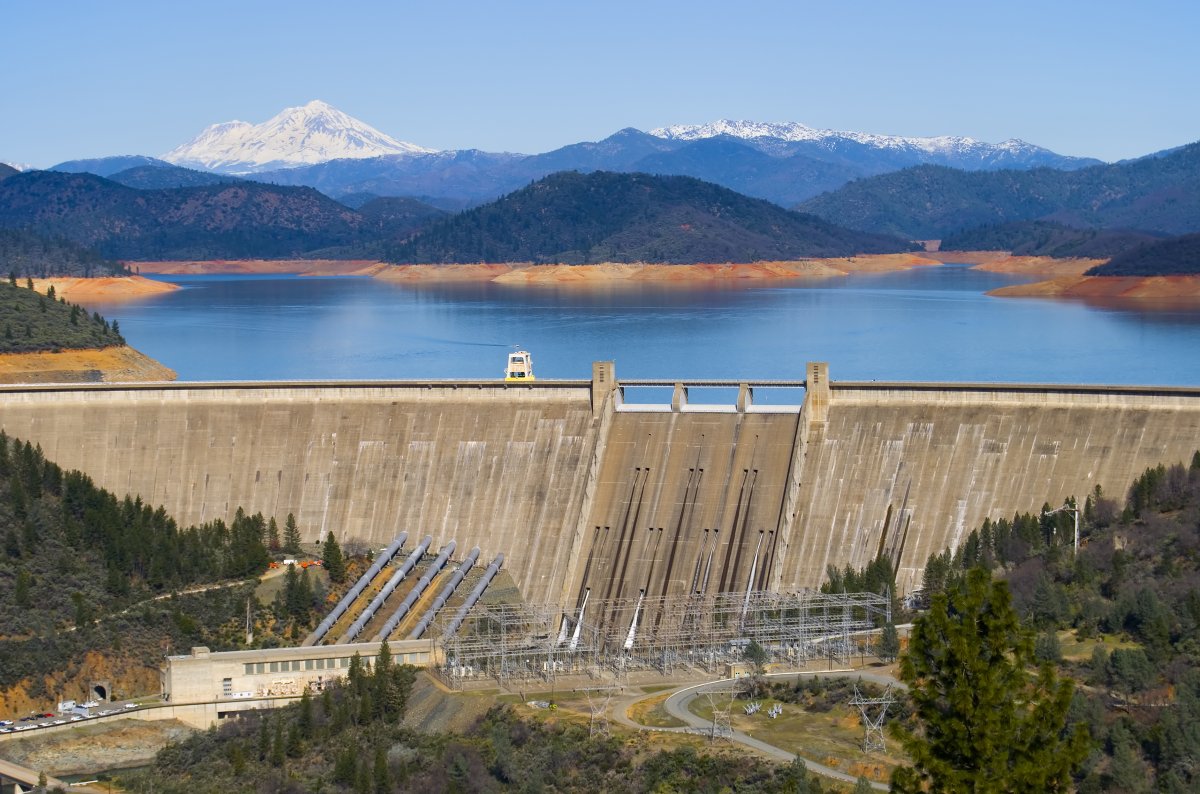Lake Shasta could reach its full capacity this spring, following a high amount of rainfall in California.
The largest reservoir in California has been steadily rising since the beginning of March. It has gone up sharply since the start of the year, which saw its levels at 1,012 feet, compared to its current level on April 5 of 1,058 feet. The lake has risen by about 19 feet since the beginning of March alone.
"Shasta Reservoir is currently 121 percent of the 15-year average and 93 percent full as of April 4. Unlike other Central Valley Project reservoirs, Shasta is predominantly filled by rainfall rather than snowpack runoff," a Bureau of Reclamation spokesperson told Newsweek.
An area manager for the U.S. Bureau of Reclamation told local newspaper Redding Record Searchlight that they are expecting Lake Shasta to "creep right up to the top." The reservoir, located in Shasta County, California, was in a dire situation due to drought in 2022.

The lake replenished to high levels last year due to a record amount of rainfall. And now, following another wet year for the state, its levels are once again looking healthy.
Before 2023, California had been plagued by drought. Intense rain and snow storms last year brought so much water supply that the drought status was completely lifted, and the state now looks safe for another year.

Other reservoirs in the state are fed through snowmelt, which comes trickling down from the Sierra Nevada in the spring.
The California Department of Water Resources (DWR) has recently conducted its April snow survey, which is the most important of the year as it determines how much water supply the state could see when the snow starts melting.
The survey recorded 64 inches of snow and 27.5 percent of snow water equivalent. This put the snowpack at 113 percent of average.
California's reservoirs already "remain in good shape," the department said in a statement, "thanks to state efforts to capture and store as much water as possible from record storms in 2023 and again this season."
"It's great news that the snowpack was able to catch up in March from a dry start this year. This water year shows once again how our climate is shifting, and how we can swing from dry to wet conditions within a season," the department director Karla Nemeth said in a statement.
"These swings make it crucial to maintain conservation while managing the runoff. Variable climate conditions could result in less water runoff into our reservoirs. A hundred percent snowpack does not mean 100 percent runoff. Capturing and storing what we can in wetter years for drier times remains a key priority," Nemeth added.
However, the department has warned that, despite two good years of rain and snow, there is still a chance the state could suffer from drought in the future.
Prolonged drought conditions have been largely put down to climate change, and the department warned in a statement that California will have to adapt to these.
Do you have a tip on a science story that Newsweek should be covering? Do you have a question about Lake Shasta? Let us know via science@newsweek.com.
Uncommon Knowledge
Newsweek is committed to challenging conventional wisdom and finding connections in the search for common ground.
Newsweek is committed to challenging conventional wisdom and finding connections in the search for common ground.
About the writer
Robyn White is a Newsweek Nature Reporter based in London, UK. Her focus is reporting on wildlife, science and the ... Read more
To read how Newsweek uses AI as a newsroom tool, Click here.








